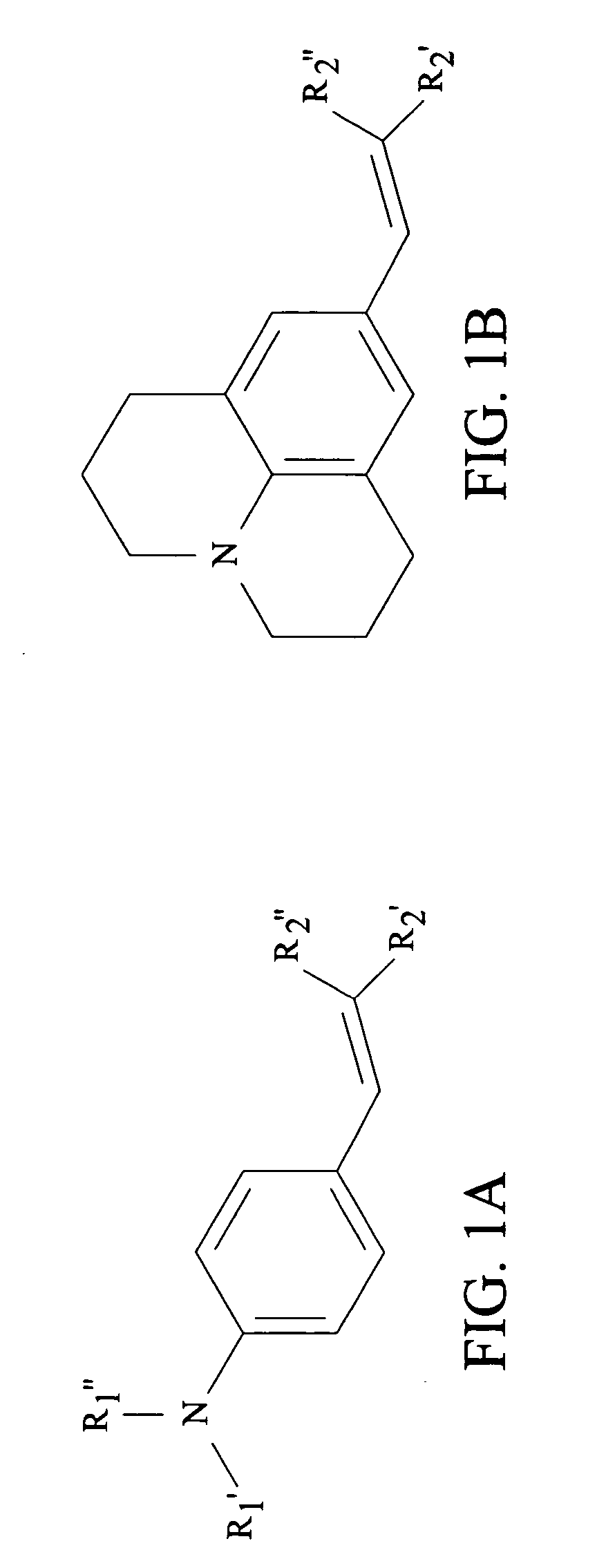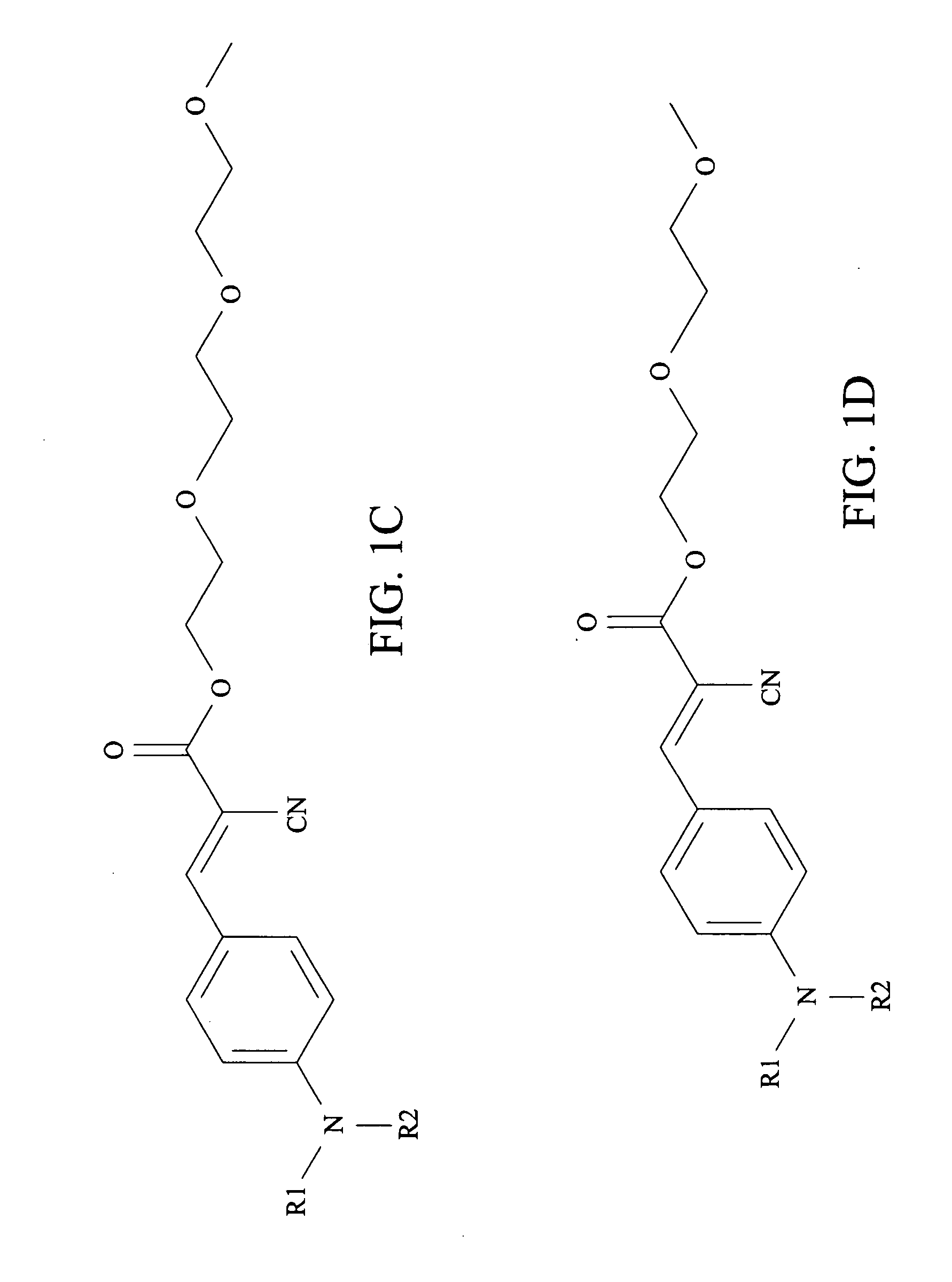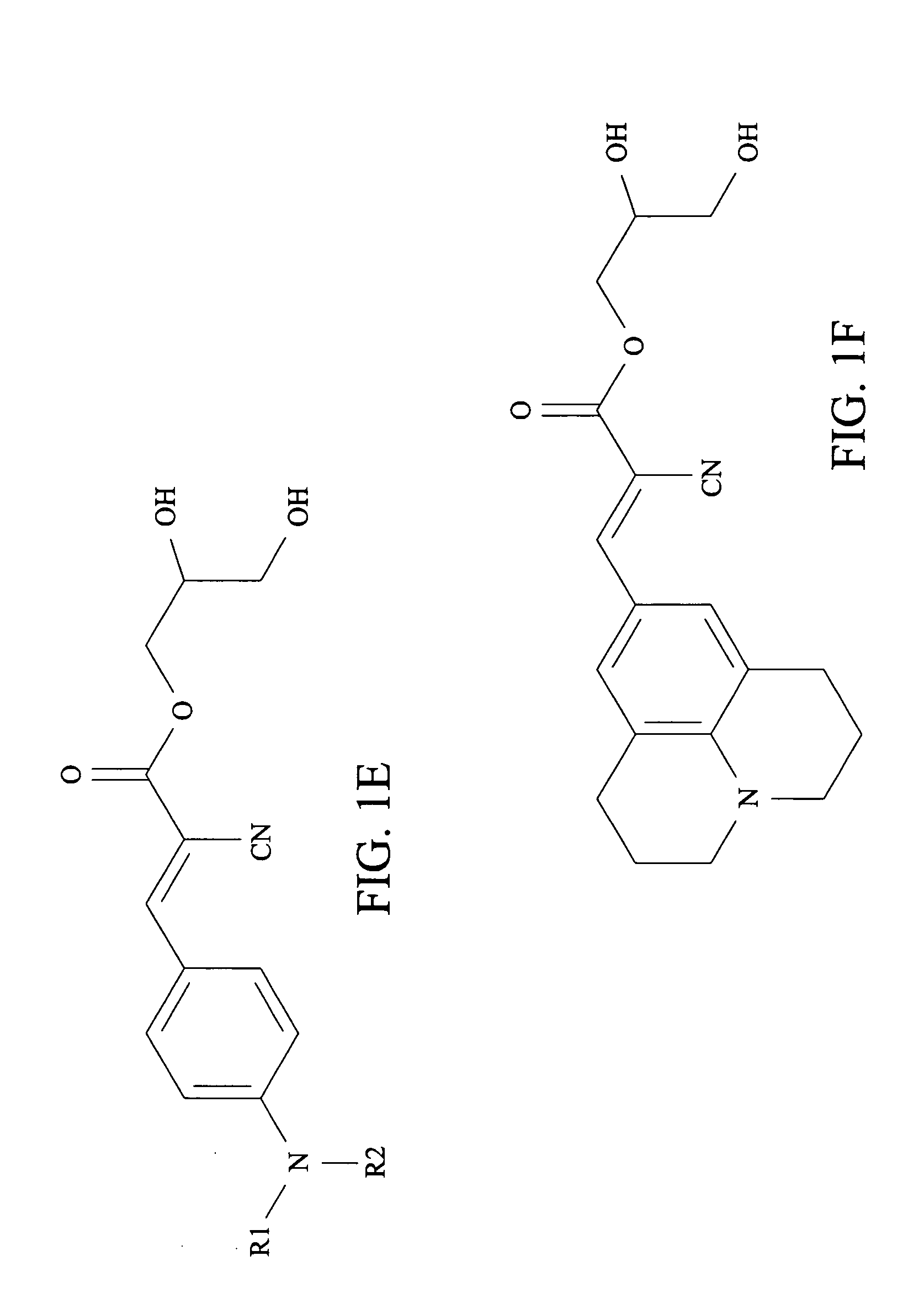Local flow and shear stress sensor based on molecular rotors
a molecular rotor and sensor technology, applied in the field of microfluidics, can solve the problems of low spatial resolution of mri and ultrasound methods, and complex all methods
- Summary
- Abstract
- Description
- Claims
- Application Information
AI Technical Summary
Benefits of technology
Problems solved by technology
Method used
Image
Examples
examples
[0049] An exemplary in vitro analysis is useful in applications involving nanomachines, liquid chromatography and closed loop control of microfluidic machines. Nano-sized channels are used in such applications, and uniform shear stress of the channels is desirable, and minor deviations, such as those caused by occlusions, will alter the shear stress. Using molecular rotors to measure shear stress in these applications allows the channels to be checked for occlusions or other deviations as seen through fluorescence measurement.
[0050] For example, FIGS. 8A and 8B illustrates a rotor-based flow sensor element, designated generally at 58, in a closed-loop flow control system, designated generally at 60. One wall 62 of a flow channel 64, potentially a microchannel where the flow sensor element 58 is located, is covered with covalently bound molecular rotors. There is an optical window 66, which allows both excitation light 68 and emission light 70, which is flow-dependent, to pass. A li...
PUM
 Login to View More
Login to View More Abstract
Description
Claims
Application Information
 Login to View More
Login to View More - R&D
- Intellectual Property
- Life Sciences
- Materials
- Tech Scout
- Unparalleled Data Quality
- Higher Quality Content
- 60% Fewer Hallucinations
Browse by: Latest US Patents, China's latest patents, Technical Efficacy Thesaurus, Application Domain, Technology Topic, Popular Technical Reports.
© 2025 PatSnap. All rights reserved.Legal|Privacy policy|Modern Slavery Act Transparency Statement|Sitemap|About US| Contact US: help@patsnap.com



